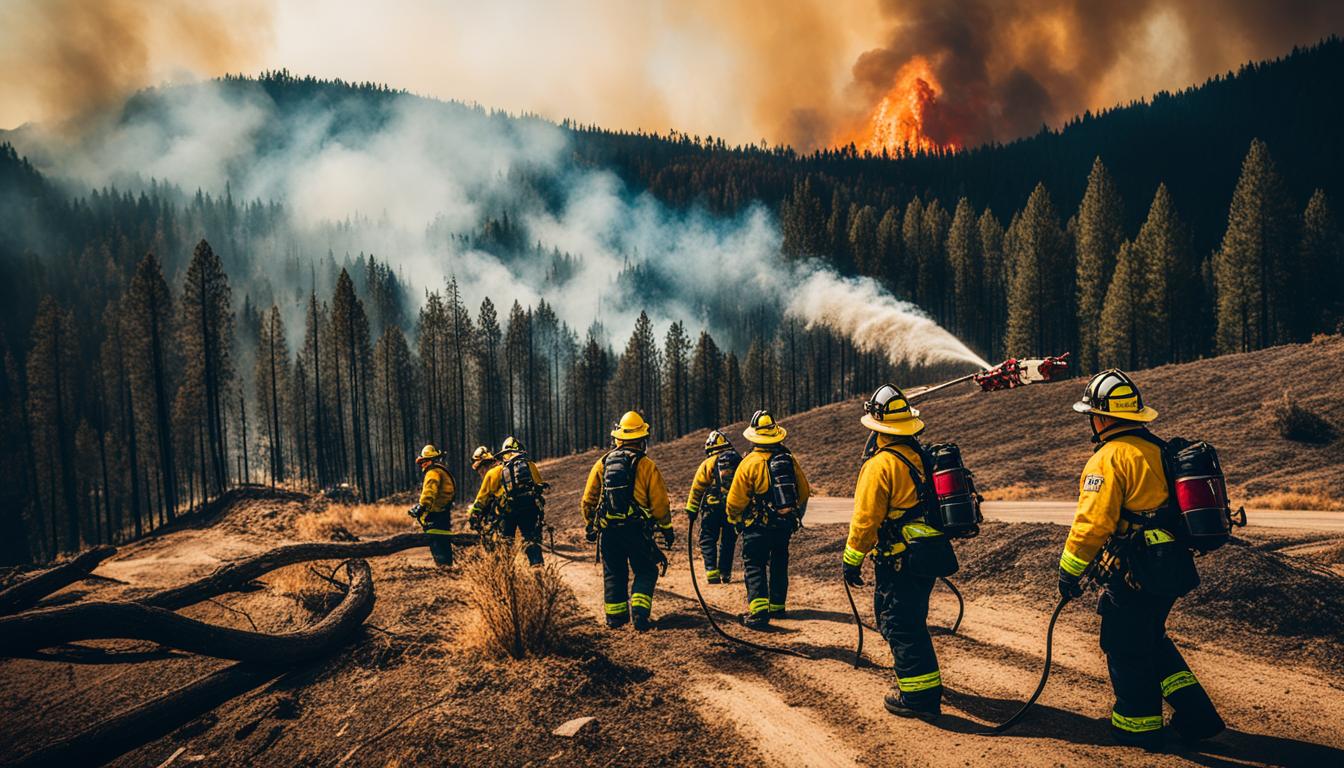The Moon has molded life on Earth and human history in profound ways. It stabilized Earth's axis, moderating temperature swings and sculpting seasons critical for ecosystems. Ancient civilizations revered the Moon, aligning calendars and rituals to its phases, shaping art, culture, and religion. Lunar cycles guided agricultural practices, optimizing crop growth and livestock behavior. The Moon's gravitational pull impacted tides, fostering marine life survival strategies. Human evolution and cultural evolution intertwined with lunar influence, synchronizing with governance, religious ceremonies, and technological advancements. The Moon's subtle sway continues to resonate through the tapestry of existence.
Key Takeaways
- Stabilized Earth's axis and regulated seasons.
- Influenced ancient civilizations' calendars and myths.
- Guided agricultural activities and religious ceremonies.
- Shaped cultural beliefs, art, and literature.
- Contributed to human evolution and societal development.
Early Earth's Climate Influence
The Moon consistently influenced Earth's early climate by stabilizing its axis and safeguarding against extreme temperature fluctuations. This stabilization guaranteed a more hospitable environment for early humans to thrive. By moderating the planet's tilt, the Moon helped regulate seasons, averting drastic temperature changes that could have impeded the development of life. Additionally, the Moon's gravitational pull influenced tides, impacting nutrient cycles vital for the survival of early life forms. This connection between the Moon and Earth's climate not only shaped the natural world but also played a significant role in the evolution of early human societies.
As early humans observed the Moon's predictable movements and its impact on Earth, they began to incorporate it into their cultures and belief systems. The lunar cycles provided a natural calendar, aiding in activities such as hunting, planting crops, and navigation. The Moon's presence in the night sky inspired awe and curiosity, leading to the development of early religions and scientific pursuits centered around understanding celestial phenomena. Hence, the Moon's influence on Earth's climate not only fostered the conditions for life to flourish but also played a pivotal role in the cultural and intellectual development of early human civilizations.
Ancient Civilizations' Reverence
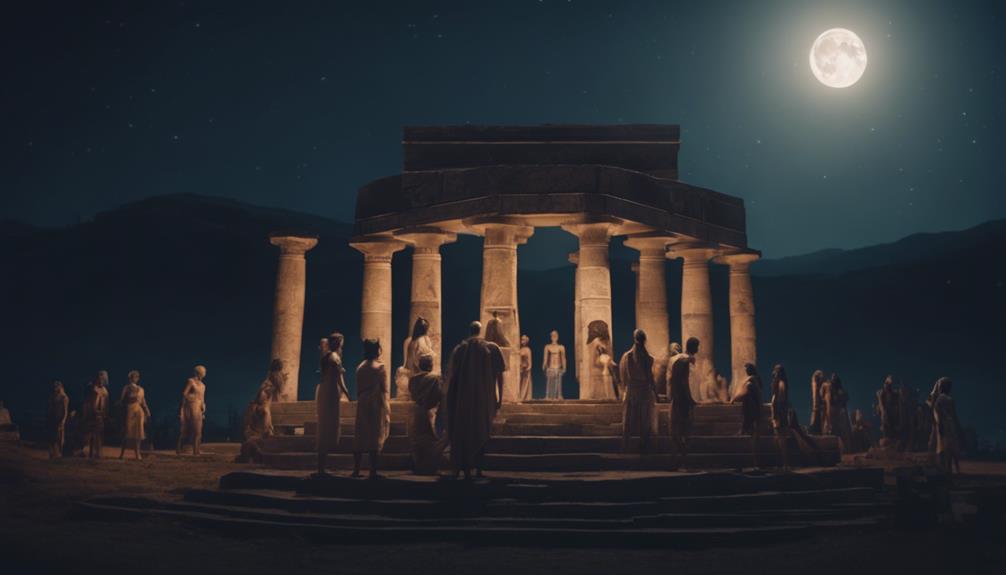
Ancient civilizations across the globe held the Moon in reverence, viewing it as a deity or symbol of divinity. The Egyptians, Greeks, and Mayans, among others, incorporated Moon worship into their belief systems and practices. Evidence of this reverence can be seen in the archaeological remains of lunar temples, monuments, and artifacts. Furthermore, ancient societies like the Babylonians and Chinese developed lunar calendars to organize time and agricultural activities based on the Moon's cycles. The celestial presence of the Moon inspired myths, folklore, and cultural traditions in these civilizations, shaping their religious beliefs and rituals. The Moon's phases, with their regular and cyclical patterns, influenced the way ancient cultures conducted ceremonies and structured their societies. This deep connection to the Moon highlights the significant role it played in shaping the worldview and practices of diverse ancient civilizations.
| Ancient Civilizations | Moon Worship | Lunar Calendars | Archaeological Evidence |
|---|---|---|---|
| Egyptians | Deity | Tracking Time | Lunar Temples |
| Greeks | Symbol of Divinity | Agricultural Cycles | Monuments |
| Mayans | Religious Symbol | Lunar Cycles | Artifacts |
Lunar Phases and Cultural Practices

Lunar phases played a significant role in shaping cultural practices worldwide. From guiding agricultural activities to influencing religious ceremonies, the moon's phases were intricately woven into various aspects of human societies.
Lunar calendars, rituals, and beliefs were deeply rooted in the understanding and observation of the moon's changing phases.
Moon Phases in Rituals
Throughout history, different cultures have incorporated the varying phases of the moon into their rituals and traditions. The moon phases held significant importance in the practices of ancient cultures worldwide. These lunar phases symbolized essential concepts such as growth, fertility, death, and rebirth within various cultural traditions.
Many ancient societies relied on lunar calendars, aligning their planting seasons, harvest times, and religious festivals with the cycles of the moon. Among the lunar phases, the full moon stood out for its perceived importance and influence, often marking special rituals, ceremonies, and celebrations.
Understanding the moon's phases was pivotal for timing events and activities in many ancient cultures, establishing a close link between human practices and celestial movements. The waxing and waning of the moon weren't just astronomical events but served as guiding forces shaping the rhythms of life and cultural practices in ancient societies.
Lunar Calendars Worldwide
Moon phases' influence extended beyond rituals and traditions, shaping the development of unique lunar calendars worldwide to organize religious, agricultural, and social events.
Various cultures crafted lunar calendars to synchronize their activities with the moon's phases, aligning planting and harvesting seasons, as well as religious ceremonies. The lunar calendar's importance in predicting celestial events proved crucial for planning significant activities in civilizations across the globe.
From the ancient Egyptians to the Chinese, lunar calendars played a central role in structuring time and guiding cultural practices. Observing the moon's changes allowed communities to anticipate natural rhythms and adapt their behaviors accordingly.
These calendars not only tracked time but also reflected the deep connection between humans and the cosmos. As a result, lunar calendars became powerful tools for societies to navigate the complexities of life, harmonizing their activities with the ever-changing lunar cycle.
Myths and Folklore Inspiration

Myths and folklore revolving around the moon have served as a wellspring of inspiration for cultures across the globe. These ancient stories of moon deities, celestial events, and lunar cycles have deeply influenced early religions and belief systems.
The moon's symbolic significance in myths hasn't only led to the creation of rituals and festivals but has also shaped art, literature, and humanity's understanding of the supernatural and natural worlds.
Lunar Legends Influence
In ancient civilizations, cultural beliefs and practices were profoundly influenced by legends and myths surrounding the lunar presence. Ancient humans held the Moon in high regard, leading to widespread moon worship in civilizations such as Mesopotamia, Egypt, and China.
Myths of lunar deities like Selene in Greek mythology, Chang'e in Chinese folklore, and Thoth in Egyptian culture showcase the significant role the Moon played in shaping beliefs. These tales often depicted the Moon's involvement in creation stories and celestial events, emphasizing its mystical and powerful nature in the eyes of ancient societies.
Even today, the influence of these moon-inspired legends can be seen in modern art, literature, and spiritual practices, highlighting the enduring impact of lunar myths on human culture and history.
Cultural Tales Impact
Entwined within the tapestry of human culture are tales that draw inspiration from the celestial body that illuminates the night sky. Moons have long captured the imagination of civilizations worldwide, leading to the creation of myths and folklore that reflect humanity's deep connection to the lunar cycle.
Ancient societies crafted stories attributing the Moon's influence to various aspects of human behavior and the natural world. Deities associated with the Moon and symbolic representations of lunar phases permeate diverse cultures and mythologies, highlighting the universal fascination with this celestial body.
Folklore surrounding the Moon's presence in the night sky continues to inspire artistic expressions and spiritual beliefs. Stories of lunar eclipses and the Moon's mysterious powers shape cultural narratives, reflecting humanity's ongoing intrigue with the enigmatic nature of Earth's satellite. Through myths and legends, the Moon remains a central figure in shaping cultural identities and conveying profound truths about the human experience.
Moon's Role in Agriculture
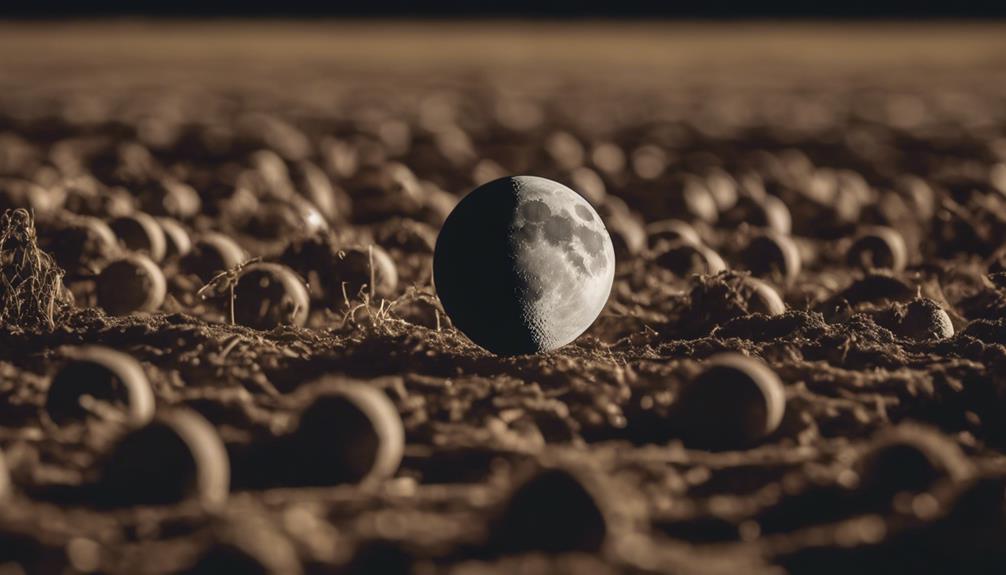
The Moon's gravitational pull greatly influences agricultural practices, particularly in the important aspects of irrigation and water management. Farmers have historically used lunar cycles to guide planting, harvesting, and other agricultural activities. By following lunar calendars, some agricultural practices aim to enhance crop growth and yield. Lunar phases are thought to impact plant growth, seed germination, and even livestock behavior, affecting various aspects of agriculture. Additionally, the Moon's influence on Earth's ecosystems extends to agriculture by influencing pollination, pest control, and overall productivity. To illustrate the significance of the Moon's role in agriculture, consider the following table:
| Aspects of Moon's Role in Agriculture | Details |
|---|---|
| Lunar Cycles | Guide planting and harvesting schedules |
| Crop Growth | Optimized through lunar calendars |
| Livestock Behavior | Influenced by lunar phases |
The Moon's presence is not only a celestial beauty but also a practical influencer of agricultural activities on Earth.
Navigational Significance
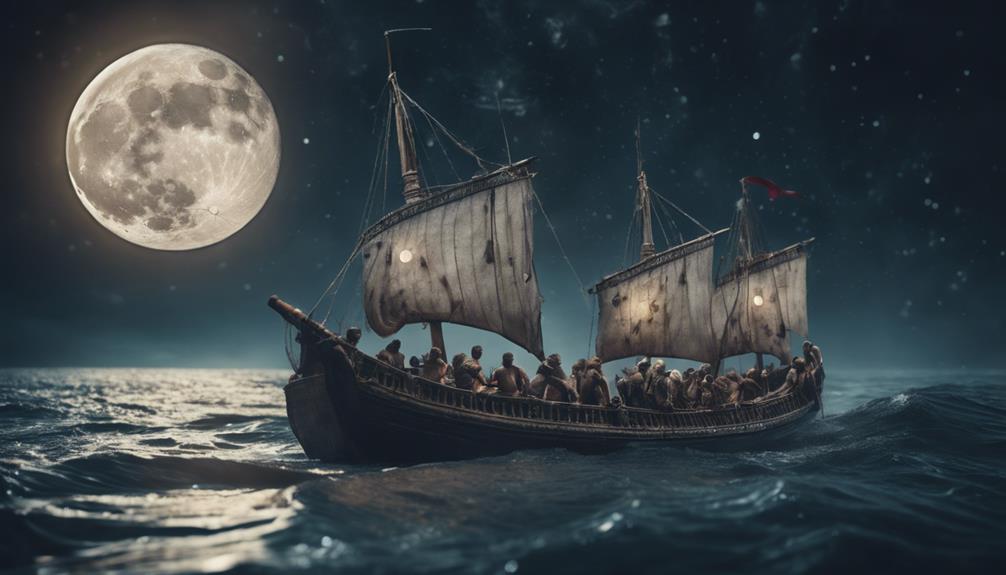
The navigational significance of the Moon encompasses its role in the development of lunar calendars.
Its influence on ocean tides is another crucial aspect.
Additionally, the Moon's connections to cultural folklore have played a significant role in human history.
These three key points highlight how the Moon has been utilized throughout history as a guide for navigation, a regulator of natural phenomena, and a source of inspiration for storytelling and traditions.
Understanding the multifaceted impact of the Moon on navigation provides insights into ancient and modern practices that have shaped human interactions with the natural world.
Lunar Calendars Importance
In ancient civilizations, the significance of lunar calendars for guidance and timekeeping was paramount. Lunar calendars were essential for tracking time, seasons, and exploring the night sky. The Moon's phases not only assisted early humans in determining the best times for planting crops, hunting, and conducting religious ceremonies but also played a crucial role in helping seafarers in determining tides, safe sailing conditions, and celestial positioning. These calendars, based on celestial observations, were instrumental in coordinating agricultural activities, festivals, and societal events.
To emphasize the importance of lunar calendars further, let's look at a comparison between solar and lunar calendars:
| Solar Calendars | Lunar Calendars |
|---|---|
| Based on the movement of the sun | Based on the phases of the moon |
| Consist of 365 days | Consist of around 354 days |
| Used in many modern calendars | Used historically for agricultural and navigational purposes |
| Seasons are the primary focus | Lunar cycles dictate months |
The use of lunar calendars highlighted the Moon's significance in guiding human activities and shaping cultural practices.
Ocean Tides Influence
Relying on lunar cues, ocean tides influence the navigation of various organisms, shaping their behaviors and survival strategies. The Moon's impact on tides is an essential factor that guides the movements of marine life. For instance, organisms like sand hoppers utilize lunar cues for orientation and navigation along coastal areas. Some species have evolved specialized compasses that allow them to harness the Moon's influence for their survival needs.
The gravitational pull of the Moon not only creates the tides but also plays a significant role in shaping the behaviors and adaptations of coastal organisms. Moonlight, another aspect of the Moon's influence, is essential in guiding the activities of marine life during different phases of the lunar cycle. Understanding the intricate relationship between the Moon and ocean tides provides insights into how organisms have adapted to utilize these natural phenomena for their navigation and survival in their respective habitats.
Cultural Folklore Connections
Exploring through ancient cultures, the Moon's phases held significant importance for land and sea exploration, weaving a tapestry of myths and rituals rooted in celestial guidance.
- The Moon's navigational significance in cultural folklore dates back to ancient times.
- Various societies relied on the Moon's phases for navigation on land and sea.
- Myths and rituals were developed based on the Moon's guidance for exploration.
- Celestial events were intertwined with practical navigation using the Moon's cues.
- Navigational folklore connected to the Moon influenced traditional practices and beliefs worldwide.
Throughout history, the Moon shaped cultural folklore connections, providing a guiding light for ancient civilizations in their journeys across the vast unknown. These myths and rituals not only facilitated navigation but also fostered a deep spiritual connection with the celestial domain, influencing cultural practices and beliefs across diverse societies. The Moon's influence on cultural folklore continues to resonate in modern times, showcasing the enduring legacy of celestial guidance in shaping human history.
Timekeeping Through Lunar Cycles
Utilizing lunar cycles for timekeeping served as a fundamental practice for ancient civilizations throughout history. Lunar calendars were meticulously crafted to align with the phases of the moon, guiding societal activities and marking significant events. The lunar cycle, with its roughly 29.5-day period, provided a natural rhythm for time measurement. Ancient cultures relied on the observation of the moon's changing appearance in the sky to divide the months and track the passage of time.
While lunar calendars were prevalent in antiquity, the shift from lunar to solar timekeeping marked a significant change. Julius Caesar played a pivotal role in initiating this transformation, recognizing the need for a more accurate and standardized calendar system. Solar calendars, based on the Earth's orbit around the sun, gradually replaced lunar calendars due to their alignment with the changing seasons.
Tracking lunar cycles not only facilitated timekeeping but also influenced the organization of agricultural activities, religious ceremonies, and societal events. The evolution of timekeeping methods reflects humanity's quest for precision and alignment with the natural world.
Biological Rhythms Alignment

Biological rhythms synchronize with the Moon's cycles, impacting behaviors and activities across various organisms. This alignment with the Moon's cycles influences a multitude of biological processes, shaping the way organisms interact with their environment and each other.
Here are some intriguing insights into how the Moon's cycles affect biological rhythms:
- Circalunar rhythms, tied to the Moon's phases, influence reproduction and migration patterns.
- Moonlight serves as an important trigger for specific behaviors and adaptations in plants and animals.
- Certain species utilize the Moon's light for navigation, mating rituals, and feeding strategies.
- The Moon's influence on biological rhythms extends to diverse ecosystems, shaping survival strategies.
- Ecological interactions are significantly influenced by the alignment of biological rhythms with the Moon's cycles, highlighting the interconnectedness of life on Earth.
These fascinating connections underscore the profound impact of the Moon on the natural world, showcasing the intricate dance between celestial bodies and terrestrial life.
Societal Development Impact
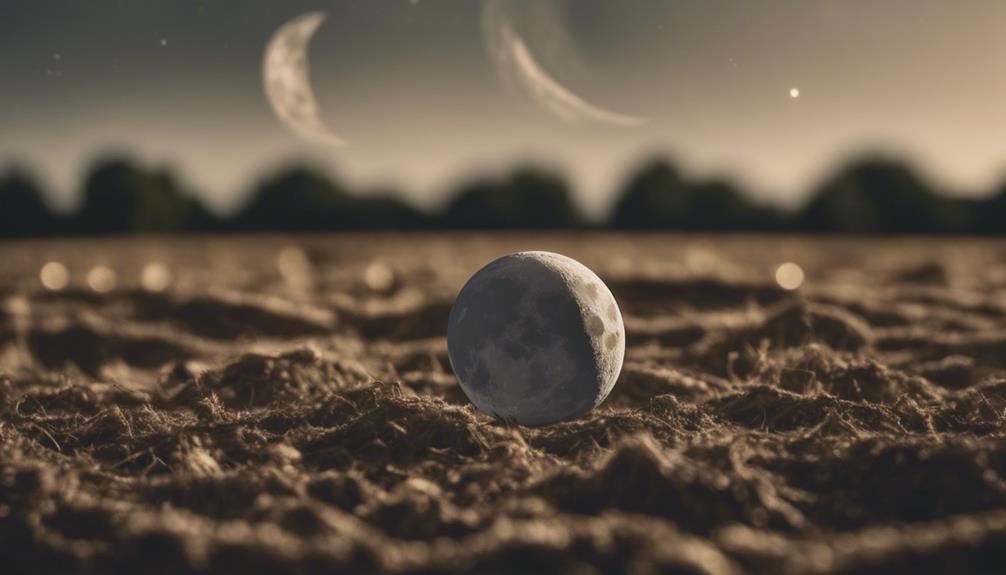
The impact of the Moon on societal development has been profound throughout human history.
Cultural evolution has been influenced by the reverence early societies held for the Moon, integrating its cycles into religious practices and shaping cultural beliefs.
Additionally, the knowledge of lunar cycles helped ancient civilizations understand fundamental concepts like birth, death, and renewal, which in turn influenced political structures and societal adaptations.
Cultural Evolution Influence
Throughout history, the Moon's presence has played a significant role in shaping cultural evolution and societal development. The influence of the Moon on human societies has been profound and far-reaching. Here are five ways in which the Moon has impacted cultural evolution:
- Early human understanding of birth, death, and renewal was influenced by the Moon's phases.
- Shared knowledge of lunar cycles facilitated societal coordination in ancient civilizations.
- The Moon's presence marked the beginning of recorded history and cultural development.
- Cultural practices, rituals, and beliefs were shaped by the cycles and appearance of the Moon.
- The Moon's influence inspired art, literature, and religious beliefs throughout history.
These aspects demonstrate how the Moon hasn't only influenced cultural evolution but also played a critical role in shaping societal development over the course of human history.
Technological Advancements Catalyst
Space exploration technologies have served as a catalyst for societal development, driving advancements in communication, weather forecasting, and navigation systems. Innovations such as satellite technology, GPS, and weather satellites, developed as a result of moon missions and space exploration, have revolutionized how humans interact with the world and predict natural phenomena.
The Apollo missions and subsequent space programs haven't only expanded our understanding of the universe but have also spurred advancements in materials science, engineering, and computer technology. Furthermore, the legacy of space exploration has fostered international collaboration, inspiring cooperation among nations for scientific research and exploration beyond Earth.
The technologies developed for moon missions continue to impact everyday life through spinoff technologies in healthcare, transportation, and environmental monitoring, demonstrating the enduring influence of space exploration on societal progress. The continuous innovation driven by space exploration underscores the profound impact it has on shaping the technological landscape of our modern world.
Political Structures Adaptation
Amid ancient civilizations, adaptations to political structures were driven by the rhythms of lunar cycles, influencing governance practices and religious observances. The connection between political structures and lunar calendars played an essential role in shaping societal development. Here are some intriguing points to ponder:
- Political structures adapted to lunar cycles for governance and religious ceremonies.
- Lunar calendars influenced the organization of political events and agricultural practices in early civilizations.
- The moon's phases were vital in determining important dates for political decisions and societal rituals.
- Leaders in some cultures claimed divine connections to the moon, shaping political legitimacy and authority.
- Lunar symbolism in political iconography and rituals reflected the power dynamics and social hierarchy of ancient civilizations.
These facts highlight how the moon's influence went beyond the night sky, profoundly impacting the political systems and structures of early societies.
Moon's Influence on Exploration
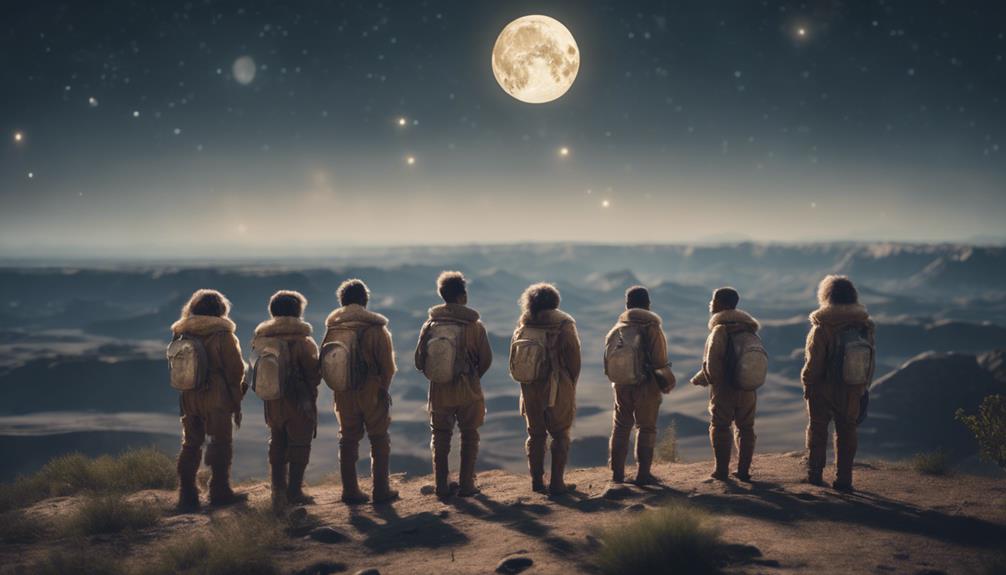
Explorers have long been captivated by the moon's mystique, driving significant advancements in space travel and technological innovation. The Apollo missions, which successfully landed humans on the moon, marked a pivotal milestone in moon exploration. Today, modern nations are planning to return astronauts to the moon, showcasing the enduring interest in lunar exploration. The moon's potential as a mining outpost and settlement destination has sparked discussions about its abundant lunar resources and possible economic benefits.
Moon exploration has transcended mere scientific curiosity, evolving into a competitive arena for nations to demonstrate their technological prowess. However, this exploration raises ethical concerns regarding the capitalist exploitation of the moon's resources. The quest for lunar resources must be balanced with considerations for sustainability and responsible stewardship. As countries gear up for future missions to the moon, the delicate balance between scientific progress, economic gain, and ethical responsibilities will shape the future of lunar exploration.
Tectonic Activities Influence
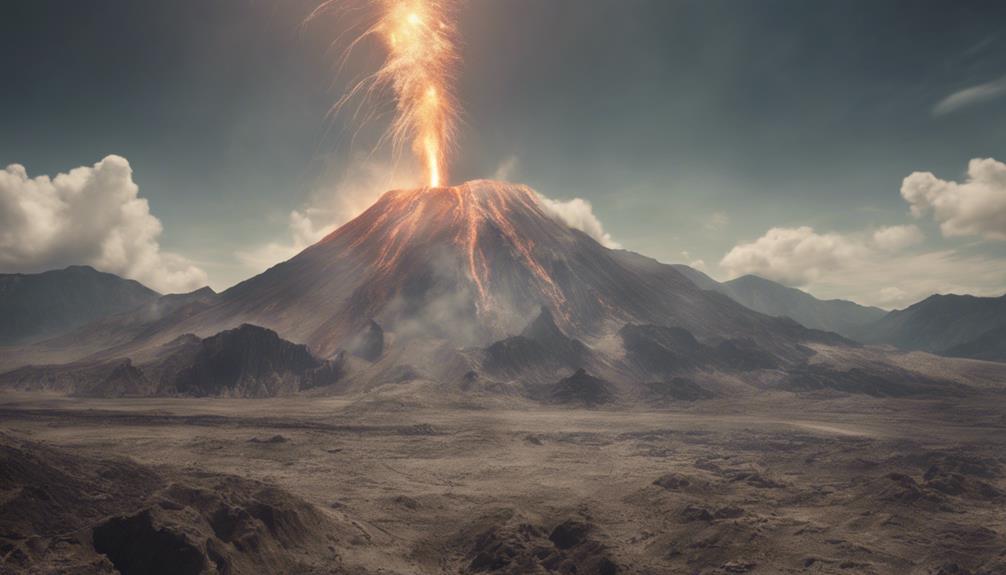
Influencing Earth's tectonic activities, the Moon's gravitational pull plays a significant role in shaping geological processes on our planet. This influence extends beyond mere gravitational attraction, impacting various aspects of Earth's tectonic dynamics.
Here are five key points illustrating the Moon's impact on tectonic activities:
- The Moon's gravitational pull contributes to the movement of continents and the distribution of mass, affecting tectonic processes.
- Tidal forces generated by the Moon can trigger seismic events like earthquakes and volcanic eruptions along tectonic plate boundaries.
- Tidal bulges created by the Moon's gravitational interaction influence the lithosphere, potentially altering plate movements.
- The presence of the Moon helps stabilize Earth's axial tilt, important for maintaining climate zones and regulating heat distribution.
- Changes in the Moon's orbit over long timescales can influence Earth's tectonic processes and have implications for long-term climate patterns.
Stability for Evolution of Life
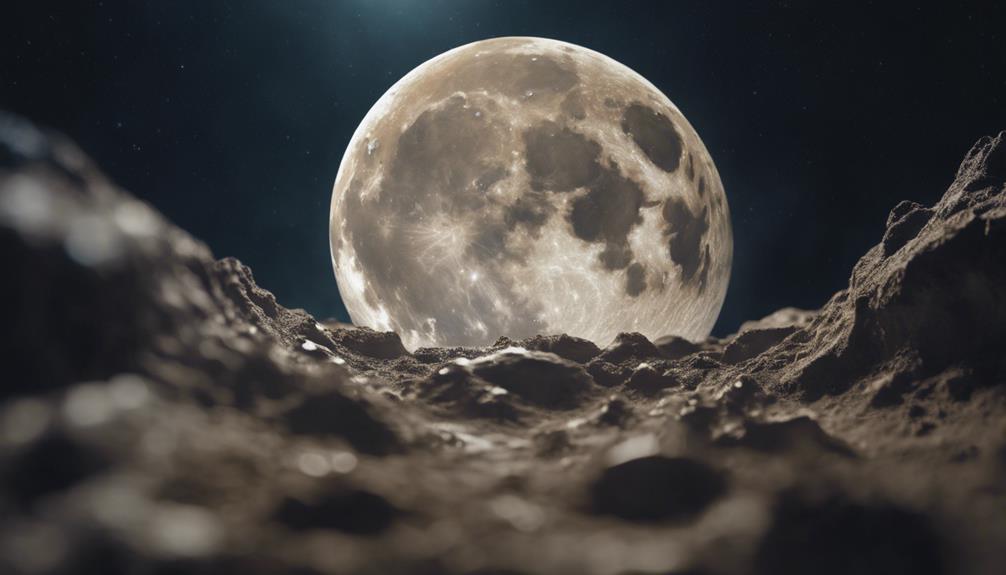
The Moon's gravitational pull played an essential role in stabilizing Earth's axis, ensuring a conducive environment for the evolution of life on our planet. This gravitational force exerted by the Moon helped prevent extreme climate changes that could have disrupted the development of life forms.
Additionally, the tidal effects caused by the Moon influenced the nutrient cycles on Earth, providing support for early organisms to thrive. The formation of tide pools, essential for the emergence of complex life forms, was facilitated by the presence of the Moon.
Moreover, the lunar cycles had a significant impact on the behavior and reproduction patterns of early life, contributing to the diversity and adaptability of species over time. By maintaining a stable environment through its influence on Earth's climate and tides, the Moon played a pivotal role in shaping the course of biological evolution on our planet.
Moon's Gravitational Pull

Playing an essential role in shaping Earth's environment and evolutionary processes, the Moon's gravitational pull exerts significant influence on various aspects of our planet.
- The Moon's gravitational pull influences Earth's tides, creating the ebb and flow in coastal areas.
- This gravitational force also affects Earth's rotation, contributing to the length of a day and the stability of our planet's axial tilt.
- Early life forms may have been influenced by the Moon's gravitational pull, potentially aiding in the development of life on Earth.
- The Moon's gravitational pull has significant impacts on Earth's climate, ocean currents, and even the behavior of certain animals.
- Understanding the Moon's gravitational pull is vital for comprehending its role in shaping Earth's environment and evolutionary processes.
The intricate dance between the Moon's gravitational pull and Earth's tides isn't only a marvel to behold but also a fundamental mechanism that has shaped our planet's landscapes and ecosystems over millions of years.
Moon's Impact on Human History
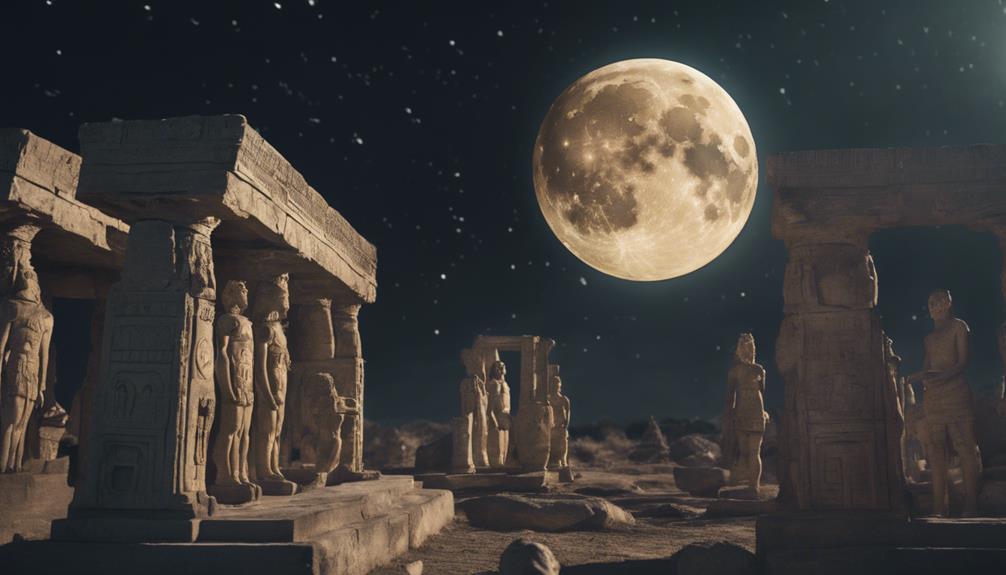
Evident throughout the annals of human history, the Moon's impact resonates deeply within cultural practices and societal developments. Early human societies, in awe of the Moon's presence and influenced by its gravitational pull, integrated lunar cycles into religious rituals, agricultural planning, and timekeeping. The Moon's phases not only guided planting and harvesting but also inspired myths, folklore, and religious beliefs across civilizations. This celestial body's influence on human biological rhythms, such as sleep patterns and menstrual cycles, has further cemented its significance in historical events and societal structures.
Moreover, the Moon's role in astrology and devotional practices has been a driving force behind decision-making processes, political strategies, and cultural norms. Its impact on human perception, biological rhythms, and historical influences has left an indelible mark on civilizations worldwide. From ancient civilizations to modern societies, the Moon's presence continues to shape human history, guiding scientific pursuits, cultural traditions, and spiritual beliefs.
Significance in Human Evolution
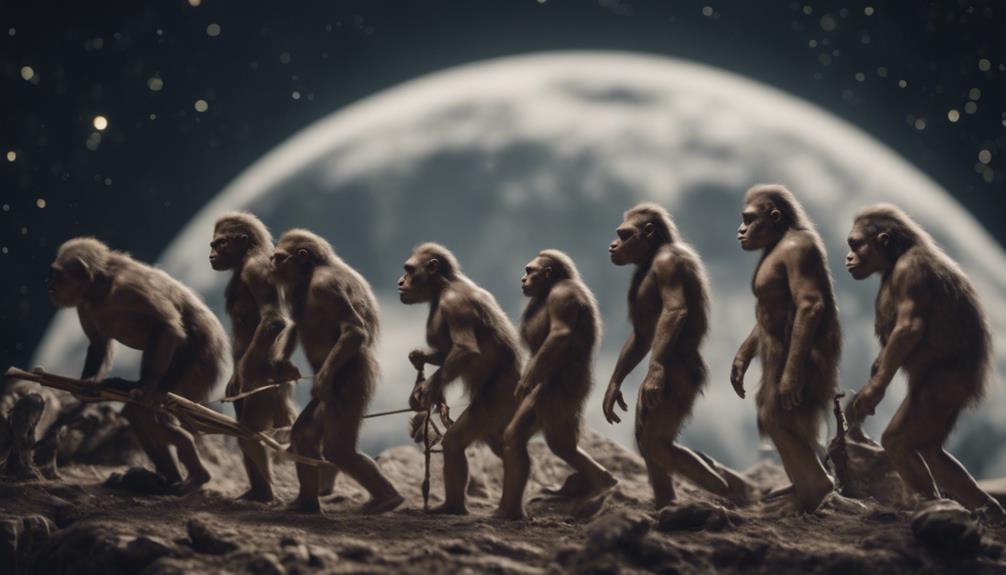
Influencing early life forms through its gravitational pull, the Moon played a significant role in shaping human evolution. The Moon's gravitational pull hasn't only impacted tides and nutrient cycles but also influenced circalunar rhythms in organisms, potentially linking the Moon to biological timing. This connection to lunar cycles could have affected early human societies' understanding of time, birth, and renewal.
Additionally, the Moon's triggers of mass spawning events in various species have had ecological consequences, shaping the environment in which humans evolved. Moonlight itself has been shown to affect behavior and navigation in organisms like dung beetles and plants, further emphasizing the Moon's influence on life on Earth.
The Moon's presence throughout human evolution has left a lasting impact on biological processes and behaviors, highlighting its significance in shaping the course of human history.
Frequently Asked Questions
How Did the Moon Shape Human History?
The Moon played a crucial role in human history through its impact on various aspects of society. Its gravitational pull influenced early human behavior, shaping cultural practices, timekeeping, and navigation.
Additionally, the Moon's cycles affected agricultural practices and fertility beliefs, leading to the development of rituals and customs.
How Did the Moon Affect Life on Earth?
The Moon profoundly impacted life on Earth through its gravitational pull, stabilizing climate and tides, influencing circadian rhythms in organisms, and triggering mass spawning events like those seen in coral reefs.
Coastal organisms, such as limpets, developed survival strategies shaped by the Moon's tidal effects. Organisms also utilize moonlight for navigation, reproduction, and survival, showcasing the profound influence of the Moon on various aspects of life on our planet.
What Is the Historical Significance of the Moon?
The historical significance of the moon is vast, influencing human beliefs, cultural practices, and biological rhythms. From ancient civilizations to modern times, the moon's presence has been intertwined with human history, shaping societal norms and religious practices.
Its impact on early societies' orientation and perception of the world has been profound. How has the moon's influence evolved over time, and what enduring legacies has it left on human civilization?
How Has the Moon Shaped Human History From Religion to Climate?
The Moon has greatly impacted human history through various avenues, such as religion and climate. Its presence in the sky influenced early civilizations' beliefs and practices, shaping religious rituals and calendars.
Additionally, the Moon's gravitational pull played an important role in stabilizing Earth's climate, preventing extreme changes that could have altered the course of human history.
Conclusion
To sum up, the moon has played a pivotal role in shaping life on Earth and human history. From influencing ancient civilizations to impacting agricultural practices, the moon's presence has been felt throughout time. Its gravitational pull and stability have contributed to the evolution of life on our planet.
Understanding the significance of the moon in human evolution provides a deeper appreciation for its role in shaping the world we live in today.

